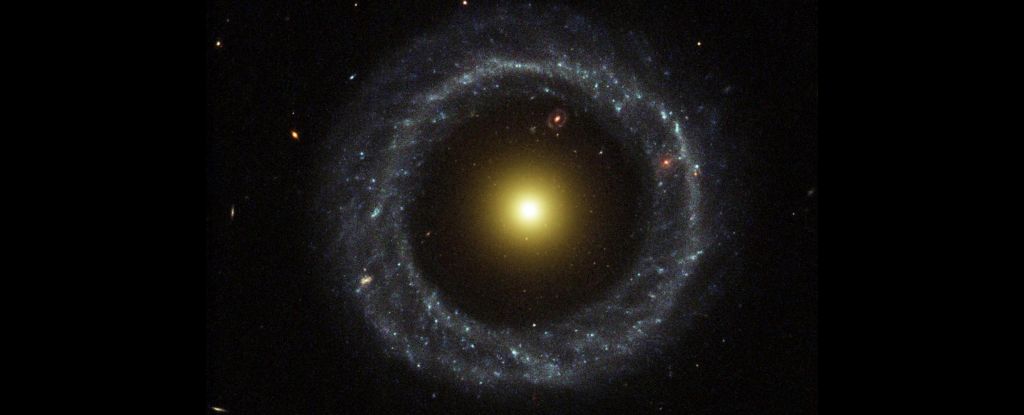
The universe continually presents a myriad of mysteries that challenge scientists and ignite public curiosity. From the ongoing debate around the rate of cosmic expansion to the elusive nature of dark matter, researchers are eager to uncover answers to these profound questions. Below are some of the most intriguing space enigmas that remain unsolved.
The Hubble Tension: A Cosmic Conundrum
The universe is expanding, but scientists have encountered a significant discrepancy in measuring the rate of this expansion, known as the Hubble constant. Two primary methods yield inconsistent results. The “standard ruler” technique relies on early universe relics, such as the cosmic microwave background and baryon acoustic oscillations. This method suggests a rate of approximately 67 kilometers per second per megaparsec. In contrast, the “standard candle” approach, which measures the brightness of objects like Cepheid variable stars and Type Ia supernovae, indicates a speed of around 73 kilometers per second per megaparsec. This unresolved discrepancy, termed the Hubble tension, has been observed repeatedly, minimizing the likelihood of human error. While scientists are closer to resolving it, the solution remains elusive, with the promise of a potential Nobel Prize for whoever cracks the case.
Fast Radio Bursts: The Cosmic Mystery Continues
First detected in 2007, fast radio bursts (FRBs) are brief but powerful pulses of radio light. The initial discovery, traced back to 2001, revealed bursts that emitted energy equivalent to that of 500 million Suns. Astronomers have since identified thousands of these events, with most originating from galaxies outside the Milky Way. While some FRBs appear only once, a select few exhibit repeating patterns. One notable FRB was traced to a magnetar within our galaxy, leading researchers to speculate whether magnetars are the sole source of these bursts. Questions persist regarding the origins, environments, and timing patterns of these mysterious signals, prompting ongoing investigation.
Dark Matter: The Unknown Force
As astronomers explored the cosmos, they discovered a critical gap in understanding the gravitational forces governing the universe. The observable matter, which includes stars, planets, and galaxies, falls short of explaining the necessary gravitational pull required for the universe’s structure and behavior. This observation led to the hypothesis of dark matter, a form of matter that interacts with normal matter only through gravity and constitutes approximately five times more gravity than visible matter. Despite intensive research since Fritz Zwicky proposed the concept in 1933, the true nature of dark matter remains elusive, with various theoretical candidates awaiting validation through technological advancements in observation.
GRB 250702B: A Record-Breaking Gamma-Ray Burst
In July 2025, a groundbreaking gamma-ray burst, designated GRB 250702B, was detected, capturing the attention of the scientific community. Gamma-ray bursts are among the most powerful explosions in the universe, typically resulting from the collapse of massive stellar cores or neutron star collisions. Prior to GRB 250702B, no gamma-ray burst had exceeded a few minutes in duration, nor had any been observed to repeat. Remarkably, this event lasted an entire day, with multiple eruptions. Scientists are currently studying the galaxy from which this outburst originated to gain insights into its nature and uncover further details about this extraordinary phenomenon.
Hoag’s Object: The Odd Galaxy
Among the myriad galaxies scattered throughout the cosmos, Hoag’s Object stands out due to its peculiar structure. Located approximately 600 million light-years away, it features a perfectly symmetrical ring of young, blue stars encircling a yellow sphere of older stars, with a vast gap of seemingly empty space in between. The origins of this unusual formation remain a mystery. Some theories suggest a significant event may have created the gap, but the symmetrical nature of the galaxy poses challenges to this explanation. Researchers are still grappling with how such a unique structure came to be.
Planet Nine: The Search for a Hidden World
Astronomers speculate about the existence of a potentially undiscovered planet, referred to as Planet Nine, lurking beyond the orbit of Pluto. Evidence of this hypothetical planet arises from the clustering orbits of small, icy objects in the outer solar system, which may indicate the gravitational influence of a larger body. Estimates suggest that this planet could be around five times the mass of Earth, with an orbital period of approximately 5,000 years. Despite extensive surveys, no direct evidence of Planet Nine has emerged, leading to debates about whether it exists at all or if the observed clustering is merely a product of observational bias.
The cosmos remains a treasure trove of mysteries waiting to be unveiled. As advancements in technology and observational capabilities continue to evolve, scientists are hopeful that answers to these questions will emerge, shedding light on the unknown aspects of our universe.






